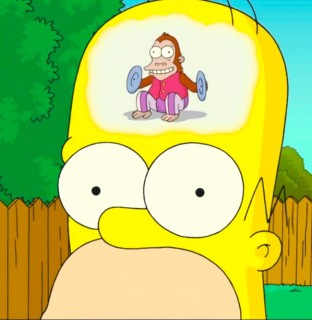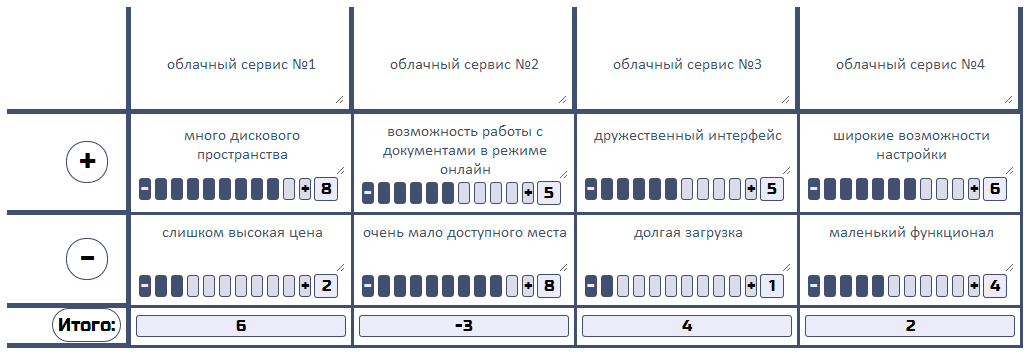Difficulty of choosing
- Tutorial
Hello to all habrazhitel!

This is my first blog post from Tornado Technologies. We have not yet issued a legal entity, but the site is already working in demo mode (you can evaluate one model out of four planned). As you can see, we are at the very beginning of the startup path. In our blog on the hub, I will write about emerging problems from the managing company, project manager, product manager and general handyman.
Today I will tell you how to solve the problem of choosing between ... Anything. Intrigued, I ask for cat.
It is always important for us to have a choice in absolutely any situation. Even if one specific solution is visible, we are still looking for other options so that there is something to compare with to find pitfalls or plan “B”. But if a person has at least one alternative, then you have to make a choice (K.O. returns). And here the fun begins, because the question arises: what will be more correct?
Well, if you have to choose between ice cream and chocolate. But sometimes it is necessary to solve more complex issues:
Surely each of you has faced a difficult choice and knows that frivolity can turn out badly, so the question should be thought out as it should. I really like one extremely simple way to evaluate the advantages and disadvantages of a particular solution - the selection table (model of pros and cons). This is quite trivial, but clearly.
I don't like a lot of theory, so let's get down to the gist. For example, the choice between going to a cafe / restaurant and ordering food at home from the nearest pizzeria. The table below has 3 columns and 5 rows. You can not really look at my example, but use your options for alternatives and freely adjust their number, as well as the number of their solutions. If you will immediately draw your table, then I highly recommend using more rows so that the table is more visual and concrete.
As you already noticed, the criteria are written in the left column, and our options are written in the top row. In this case, we have 2 of them: "Go to a cafe" and "Order food at home." Next, fill in the line factors that we will focus on when evaluating the solution. In the first line, for example, note the approximate amount of time spent. And thus we fill the table. The completed selection model below.

Yes, it differs significantly from the initial one, which I drew in Word, as I already did this on the website of our company. It has one very interesting feature - points. They help well both for descriptive reasons, and for ergonomics of the table. In this type of model of pros and cons, a scale of -5 to 5 is used, which allows the mix to add both the positive sides of the solution and the negative, without sacrificing the transparency of the table. At the very bottom, the points are summed up, and the site tells you which solution is more attractive in this case. No magic, everything is extremely simple: you yourself decided which option is more promising, the computer only analyzed the totality of the ratings you selected.
It is inconvenient to mess around on paper with points, so you can use the following options for organizing this model:
Not in all cases it will be convenient to use the table of advantages and disadvantages in this form. As another example, take the choice of a cloud service, for example, CRM.

In the first line we write the names of the services, in the second - their pluses, and in the third - minuses. In this case, there will be strictly positive or strictly negative points summarized in the line “Total”.
The developed model is easy to use and does not require a lot of time for registration, and the necessary solution is immediately evident.
In conclusion, I want to say that it was thanks to this model that I decided to found a startup. She also became its main part.

This is my first blog post from Tornado Technologies. We have not yet issued a legal entity, but the site is already working in demo mode (you can evaluate one model out of four planned). As you can see, we are at the very beginning of the startup path. In our blog on the hub, I will write about emerging problems from the managing company, project manager, product manager and general handyman.
Today I will tell you how to solve the problem of choosing between ... Anything. Intrigued, I ask for cat.
It is always important for us to have a choice in absolutely any situation. Even if one specific solution is visible, we are still looking for other options so that there is something to compare with to find pitfalls or plan “B”. But if a person has at least one alternative, then you have to make a choice (K.O. returns). And here the fun begins, because the question arises: what will be more correct?
Well, if you have to choose between ice cream and chocolate. But sometimes it is necessary to solve more complex issues:
- Which car to choose?
- To leave work to a new place or to stay?
- Mortgage or rent an apartment?
- Work or your business?
- A chicken or an egg?
Surely each of you has faced a difficult choice and knows that frivolity can turn out badly, so the question should be thought out as it should. I really like one extremely simple way to evaluate the advantages and disadvantages of a particular solution - the selection table (model of pros and cons). This is quite trivial, but clearly.
I don't like a lot of theory, so let's get down to the gist. For example, the choice between going to a cafe / restaurant and ordering food at home from the nearest pizzeria. The table below has 3 columns and 5 rows. You can not really look at my example, but use your options for alternatives and freely adjust their number, as well as the number of their solutions. If you will immediately draw your table, then I highly recommend using more rows so that the table is more visual and concrete.
| Cafe | a restaurant | |
|---|---|---|
| time | ||
| convenience | ||
| quality | ||
| price |
As you already noticed, the criteria are written in the left column, and our options are written in the top row. In this case, we have 2 of them: "Go to a cafe" and "Order food at home." Next, fill in the line factors that we will focus on when evaluating the solution. In the first line, for example, note the approximate amount of time spent. And thus we fill the table. The completed selection model below.

Yes, it differs significantly from the initial one, which I drew in Word, as I already did this on the website of our company. It has one very interesting feature - points. They help well both for descriptive reasons, and for ergonomics of the table. In this type of model of pros and cons, a scale of -5 to 5 is used, which allows the mix to add both the positive sides of the solution and the negative, without sacrificing the transparency of the table. At the very bottom, the points are summed up, and the site tells you which solution is more attractive in this case. No magic, everything is extremely simple: you yourself decided which option is more promising, the computer only analyzed the totality of the ratings you selected.
It is inconvenient to mess around on paper with points, so you can use the following options for organizing this model:
- In each line with the criterion, separate minuses and separately pluses of each solution:
decision 1 decision 2 criterion 1 pros pros minuses minuses criterion 2 pros pros minuses minuses - First, list all the pros of your decisions, and then all the cons or vice versa:
decision 1 decision 2 positive criterion 1 Plus solutions 1 Plus solutions 2 positive criterion 2 Plus solutions 1 Plus solutions 2 negative criterion 1 Minus Decisions 1 Minus Decisions 2 negative criterion 2 Minus Decisions 1 Minus Decisions 2
Not in all cases it will be convenient to use the table of advantages and disadvantages in this form. As another example, take the choice of a cloud service, for example, CRM.

In the first line we write the names of the services, in the second - their pluses, and in the third - minuses. In this case, there will be strictly positive or strictly negative points summarized in the line “Total”.
The developed model is easy to use and does not require a lot of time for registration, and the necessary solution is immediately evident.
In conclusion, I want to say that it was thanks to this model that I decided to found a startup. She also became its main part.
